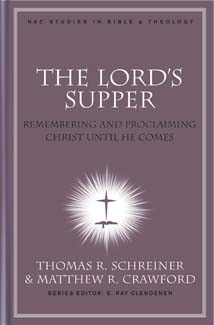From the interview on the CBD Academic blog:
Matthew: Given the current season of the year, could you briefly outline how the Christmas story contributes to your understanding of God’s Glory?
Hamilton: When God set in motion his plan to save his people and defeat his foes, he sent his son to be born. Overturning all worldly expectations, the high King of heaven was born in a barn, the helpless babe of a peasant girl. “Out of the mouths of babes, you have established strength because of your foes, to still the enemy and the avenger” (Ps 8:2).
One of the consistent themes that exposits the center of the Bible’s theology is the way that God demonstrates power in weakness. He lifts the needy from the ash heap and humbles the proud (cf. 1 Sam 2:1–10). Paul explains in 1 Cor 1:29 that God does this so that no one can boast before him.
Through the judgment that falls on the proud and strong, God delivers those who are humble and repentant–those who seek his mercy.
God’s mercy, in the wondrous humility of a newborn child, is stronger than all the proud wickedness of worldly strength.
God’s unconquerable Champion was so unimpressive that there was no room for him in the inn at his birth, and he had no place to lay his head as an adult. He was the companion of tax collectors and sinners, the teacher of fishermen and a leader of losers.
The baby born in the manger is God’s agent of salvation through judgment. God shows his glory as the humble prince of fools slays the dragon, crushing the serpent’s head, dooming his enemies to judgment, decisively liberating those who take his yoke and embrace the reproach of the cross.
And the paradoxes multiply: the conquest of the King of kings was as unimpressive as his arrival. This child, born to the meek and lowly girl in questionable circumstances, conquered not by slaying but by being slain, he showed his greatness not by being served but by serving. God’s glory is seen in salvation through judgment at Christ’s birth and at the cross, and in both places the humble righteousness of justice intensifies the surprising wonder of mercy.
God’s righteousness is gentle, like the newborn Christ-child, but those who reject the stone laid in Zion will be shattered by the gentle justice of the humble King. Similarly, God’s tender mercy is austere and unyielding as the complement of God’s justice; this is a mercy only shown on God’s terms. He gives his mercy to whom he pleases, and he is pleased to give it to those who confess and forsake their sin (Prov 28:13). Behold, indeed, the kindness and the severity of God (Rom 11:22).
The newborn child seemed weak and vulnerable, but the dragon and the world could not overcome him (cf. John 1:5).
May the God who shows power in weakness lift your heart to sing the praise of the Servant King, the humble prince in the night who will come on a white horse wearing a crown (cue the music of Rejoice).










